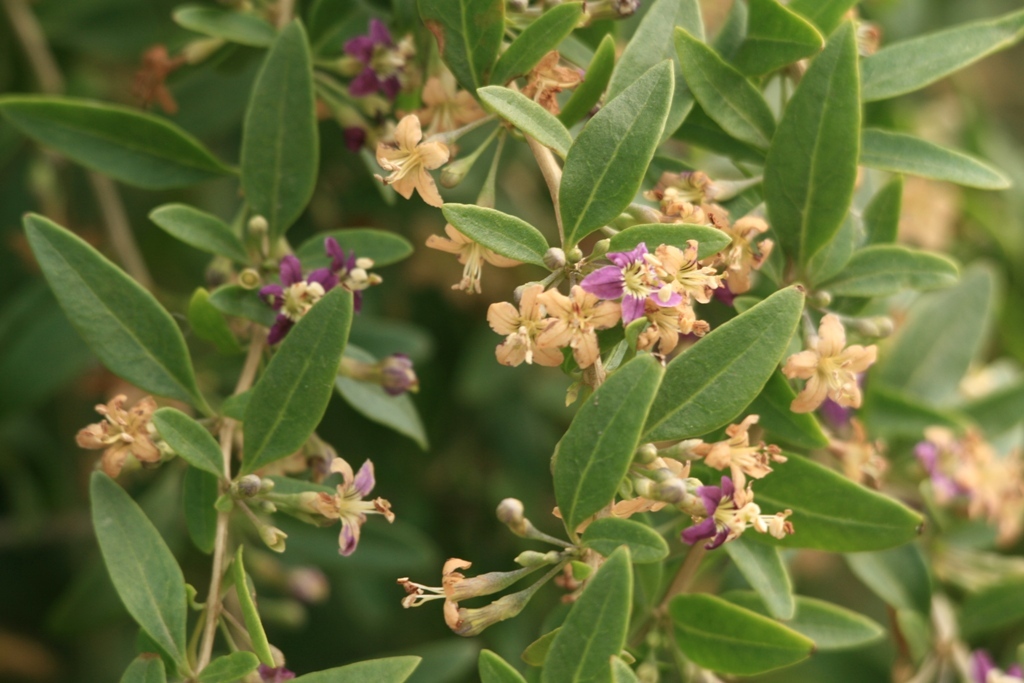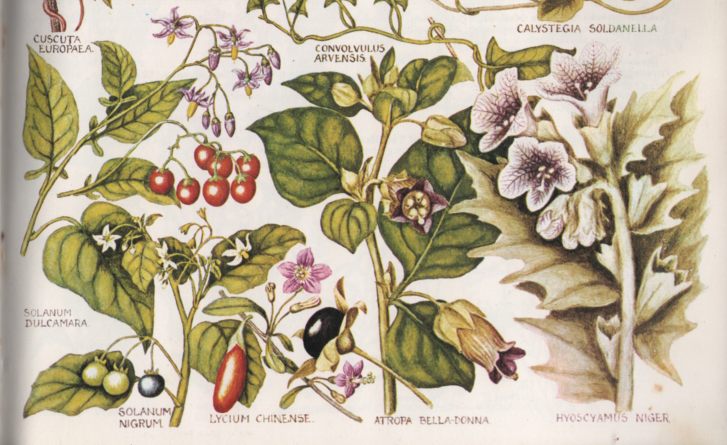
The Solanaceae or Nightshade family is a family with edible as well as poisonous members. It is therefor a fascinating one with 11 genera described in Stace of which many are neophytes.
Neophytes were introduced to these shores after the discovery of the New World in c.1550 on purpose as an ornamental or food plant. But many are also arrived accidently through wool shoddy, and in more recent years with oil-seed, bird-seed and agricultural seed.
Extract from PDF all about Wool Shoddy:
“On enquiry he found that wool waste (“shoddy”) was unloaded at the sidings and delivered to local farmers for use as a manure, and when this was followed up foreign weeds were found to be plentiful in their fields. By 1952 he had found 112 species of wool aliens in Bedfordshire (Dony, 1953) and was in touch with the firms near Bradford that despatched the “shoddy” -in that year he went to Yorkshire and in Bradford, Morley, Heckmondwike and Kirkheaton found over 40 species.”
The Wild Flower Key describes just the 5 best-known species in the Nightshade Family:
- Lycium barbarum or Duke of Argyll’s Teaplant
- Datura stramonium or Thorn-apple
- Hyoscyamus niger or Henbane
- Solanum dulcamara or Bittersweet
- Solanum nigrum or Black Nightshade
- Atropa belladonna or Deadly Nightshade

Pictures with gratitude from Mike Poulton, Matt Summers and Wikipedia Commons. FBBC added behind the common name below in the contents when the plant is described in the Flora of Birmingham and the Black Country.
Warning:
Please note that this is an educational blog and not a guide for medicinal use. All plants in this family are poisonous!! Many poisonous plants are however also often employed as medicine in a much reduced amount of course.
Contents
Lycium barbarum or Duke of Argyll’s Teaplant FBBC
- L. chinense or Chinese Teaplant FBBC
Atropa belladonna or Deadly Nightshade FBBC
Hyoscyamus niger or Henbane FBBC
Nicandra physalodes or Apple-of-Peru FBBC
Datura stramonium or Thorn-apple FBBC
- D. ferox or Longspine Thorn-apple FBBC
Salpichroa origanifolia or Cock’s-eggs FBBC
Alkekengi officinarum or Japanese-lantern FBBC
- P. peruviana or Cape-gooseberry FBBC
- P. ixocarpa or Tomatillo
- P. philadelphica or Large-flowered Tomatillo
- P. pubescens
- P. angulata
Capsicum annuum or Sweet Pepper
Solanum spp
- Solanum nigrum or Black Nightshade FBBC and
- Ssp. nigrum + Ssp. schultesii
- S. villosum or Red Nightshade
- S. scabrum or Garden Huckleberry
- S. chenopodioides or Tall Nightshade
S. nitidibaccatum (syn S. physalifolium) or Green Nightshade FBBC
- S. sarrachoides or Leafy-fruited Nightshade
- S. triflorum or Small Nightshade
S. dulcamara or Bittersweet FBBC
- S. tuberosum or Potato FBBC
- S. lycopersicum or Tomato FBBC
- S. laciniatum or Kangaroo-apple
- S. carolinense or Horse-nettle
- S. sisymbrifolium or Red Buffulo-bur
S. rostratum or Buffulo-bur FBBC
- S. chacoense or Chaco Potato and locally known as ‘Jack Hawkes’ Potato FBBC
- S. nitidibaccatum
- S. pseudocapsicum
Nicotiana rustica or Wild Tobacco
- N. sylvestris or Argentine Tobacco FBBC
- N. tabacum or Tobacco
- N. alba or Sweet Tobacco
- N. x sanderea or Garden Tobacco FBBC
- N. forgetiana or Red Tobacco
